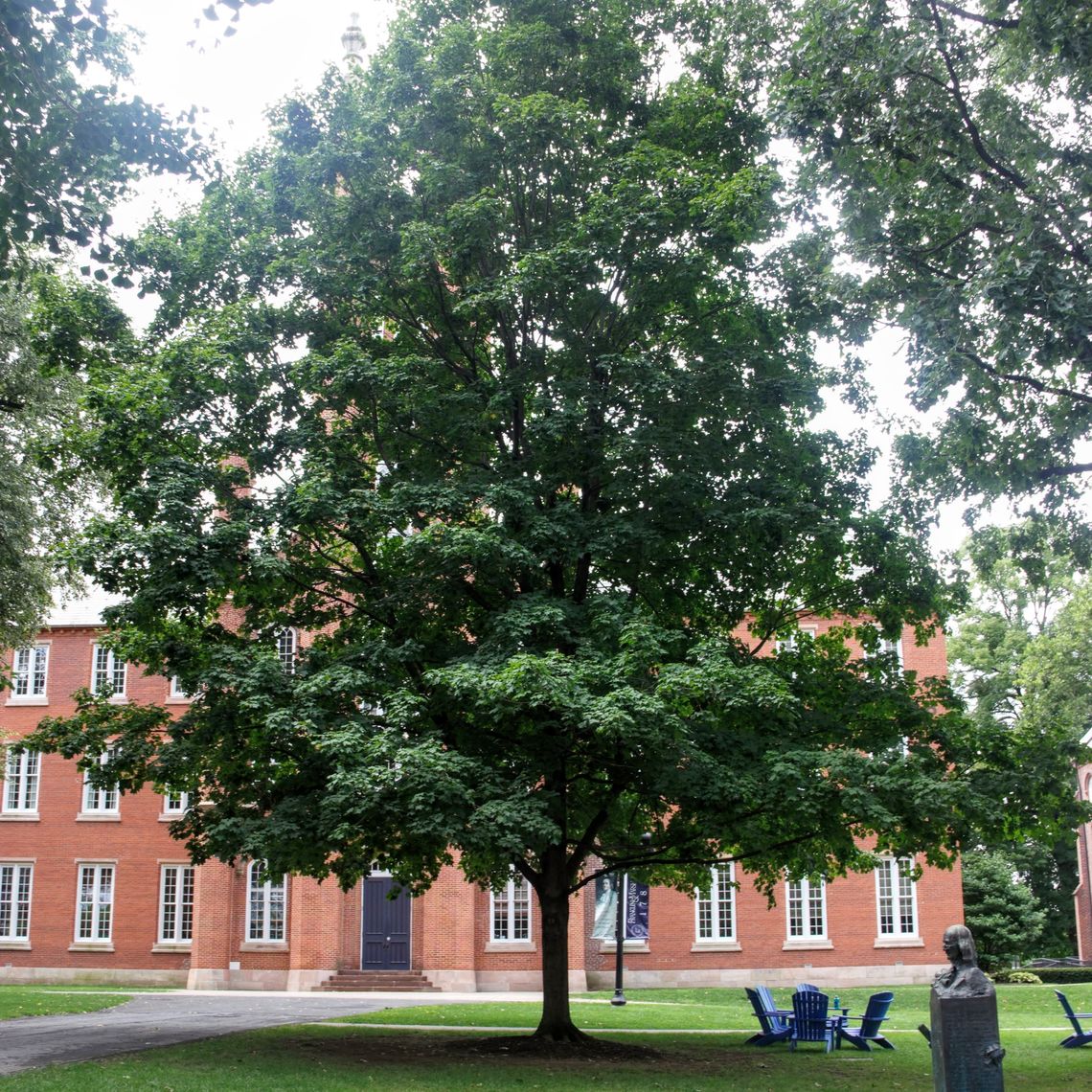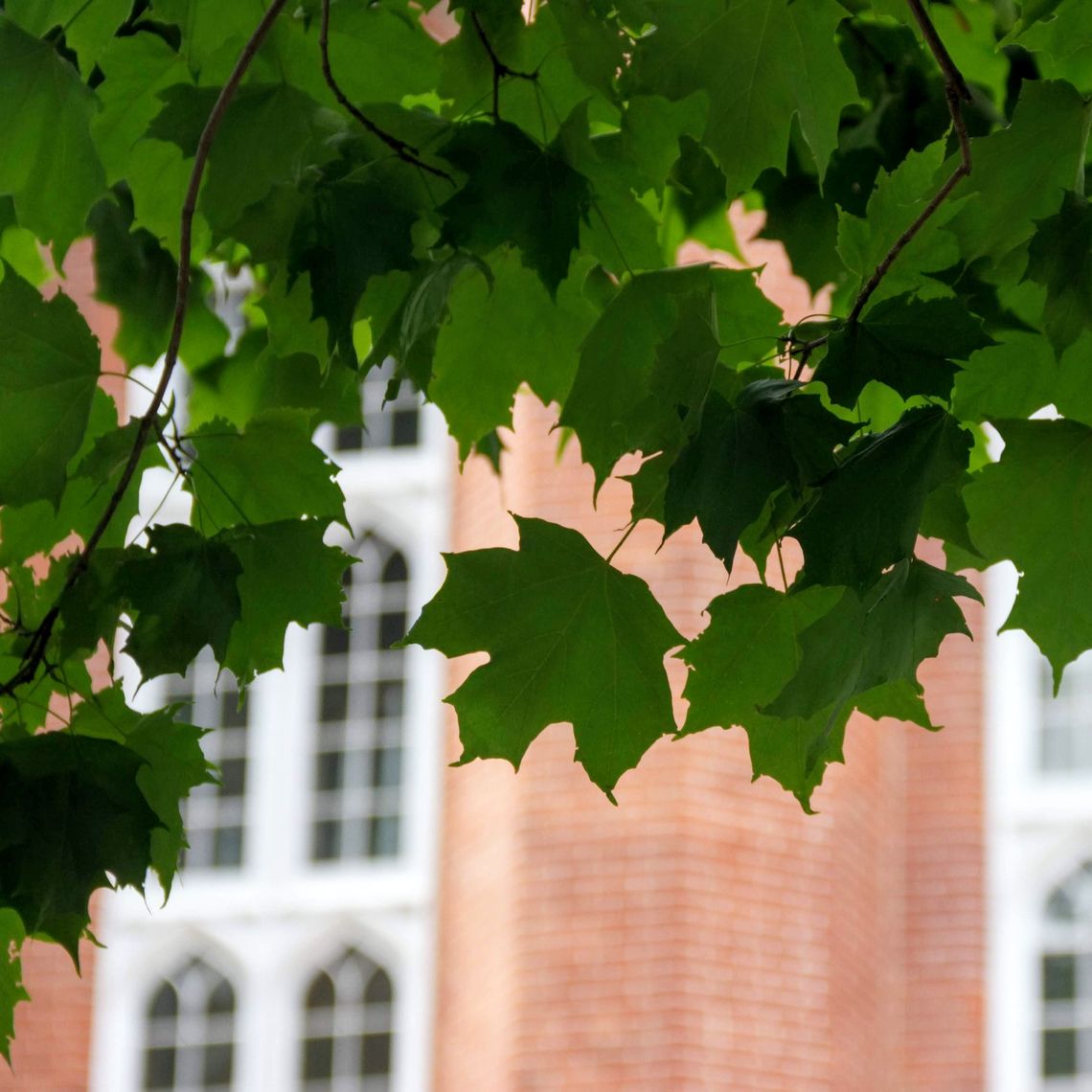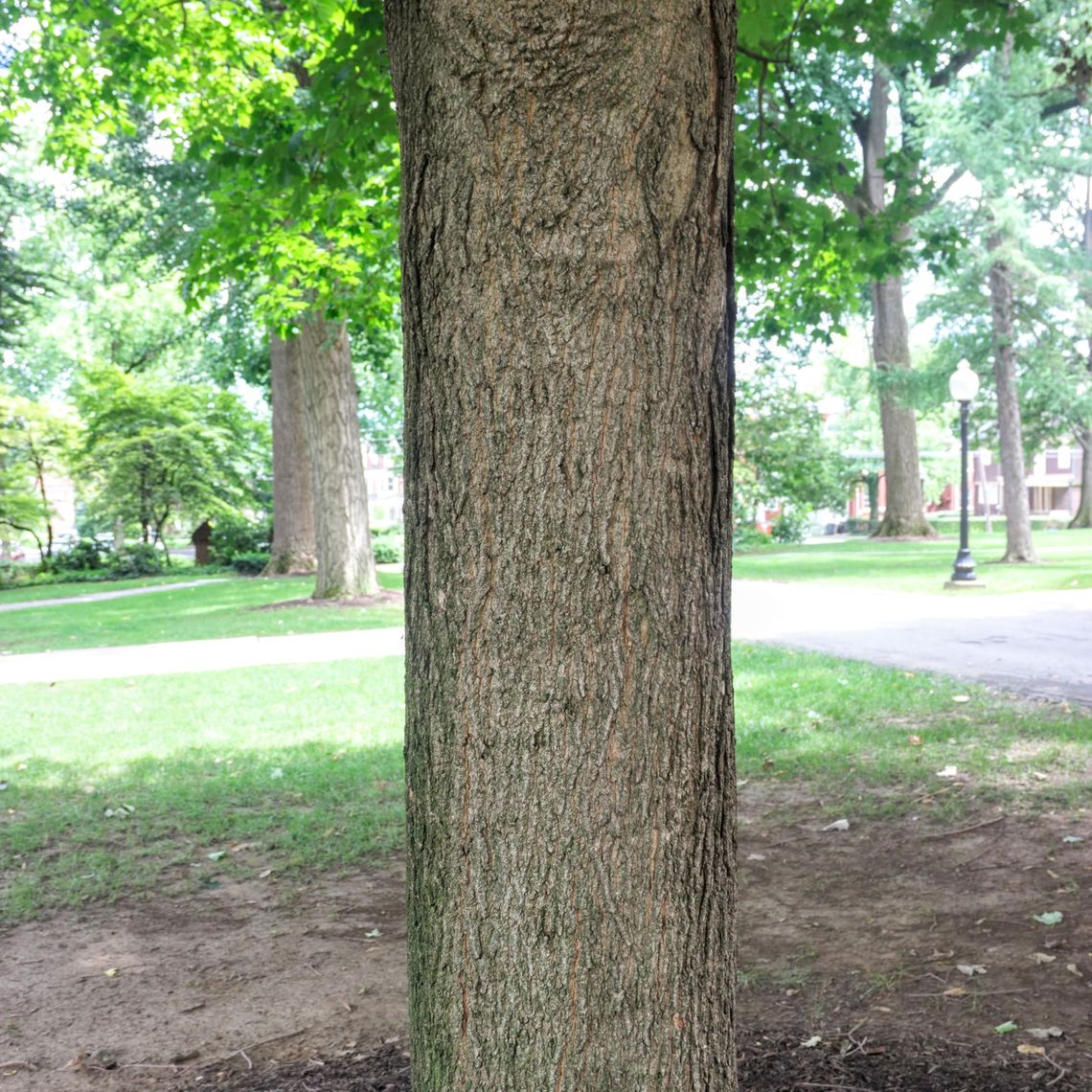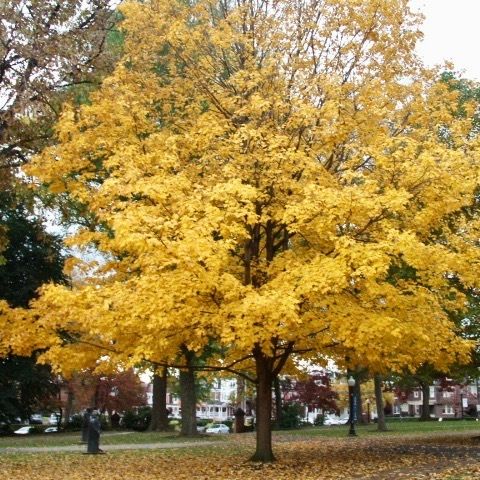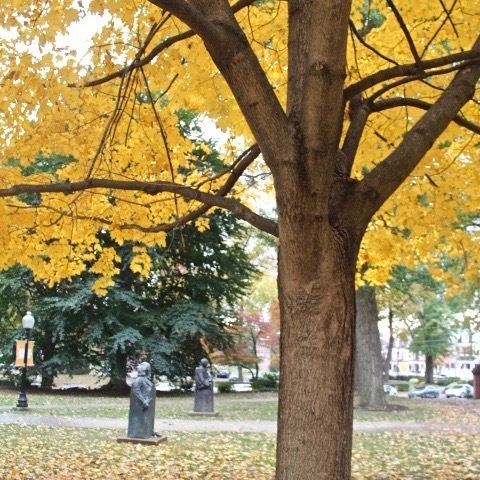Norway Maple (Acer platanoides)
The Norway maple has small yellow flowers that cover the tree in the spring before leaves emerge. The tree's leaves are dark green, 5-lobed and toothed. Its bark is gray and ridged. Since the Norway maple is tolerant to a wide range of soil types and weather conditions, and it reseeds freely, it is considered to be an invasive species. This tree attracts insect pollinators.
Family: Aceraceae (Maple)
Characteristics: In the spring, yellow flowers begin to appear on branches before leaves emerge. Leaves are dark green, 5-lobed, toothed, 4-7 inches wide, and are paired (grow opposite of each other). In the fall, leaves may turn yellow. Like all maples, the Norway maple produces samaras (paired winged fruits). Bark is gray and lightly ridged and furrowed. This tree has a rounded shape. It grows 40-50 feet high and 30-50 feet wide.
Foliage: Deciduous (leaves lost seasonally)
Geographic Origin: North Eastern Europe (non-native)
Cultivation Notes: Requires low maintenance. Does best in full sun to part shade. Prefers medium moist, and well-drained soils. It is tolerant to heat, drought, and air pollution, therefore does well in urban settings. The Norway maples can spread aggressively and has invasive traits, therefore it is often not recommended for planting.
Number on Campus: 1
Sources: Dirr, Morton Arboretum, Missouri Botanical Garden

